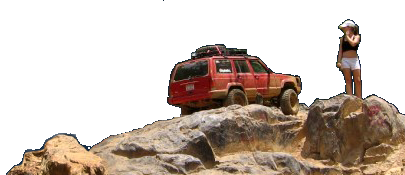Another reason for the radiator install was to get the final placement of everything so I could get a tire carrier fabricated. To keep on keeping on, I plotted a few ideas in how I wanted to carry a spare. To make things easier to visually see, I threw a spare tire on the back and strapped it down. I quickly realized with a spare permanently in the way, I was losing a lot of space that I could utilize. I decided to make a fold down design that will keep the tire up out of the way, but able to access stuff in the back once folded down. With some spare 1 1/4" tubing lying around, a couple of 3/4" heims, and scrap metal sheet, I created the initial design.
After playing with the angles a bit, I finally was happy with the initial mockup and started to add some additional strength to the design.
Now the hardest part about this whole thing was figuring out a way to install the tire in the "center". I decided to utilize a "spare" unit bearing on the carrier to hold the spare tire down and keep it centered. This will allow us to have a spare onboard for the long races such as KOH as well. Therefore I used some spacers and flat bar to put together a bearing cup. Although not completely perfect, it'll work well as a spare holder. To get it where it needed to be, I removed the carrier, put an old unit bearing in our wheel/tire combo, installed the cup and tacked the cup in its place. I took a few additional scrap pieces and made gussets to secure it to the carrier.
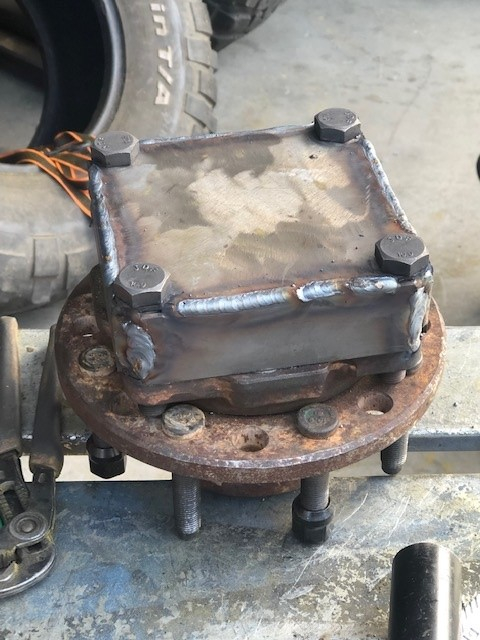
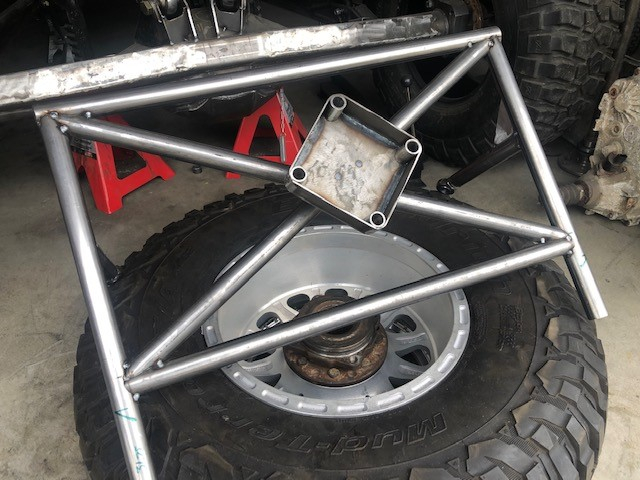
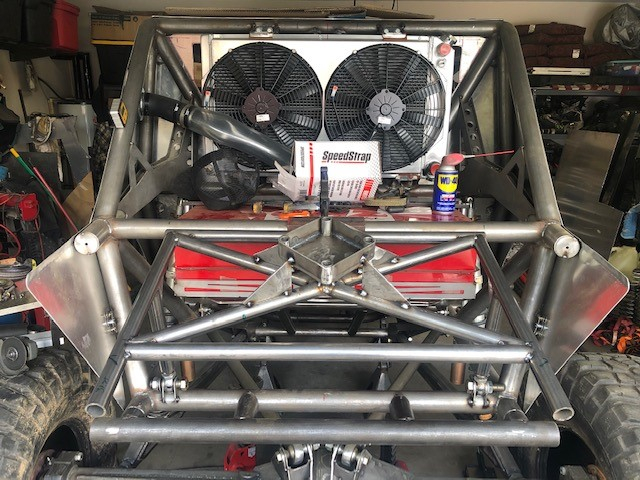
To hold the carrier in the "up" position, I used 1/2" t-handle pins on both sides to keep it from moving. Not super happy with how the initial t-handles came out, I later cut them off and used leftover tubing instead of the flat bar. It made the overall design more appealing and stronger. To complete the look of the carrier, I wanted to incorporate a radiused bar on the rear to help with tire support. Unfortunately I do not have a tubing roller so I did what I do best and improvised. I cut the bar I was going to use 6" longer on both sides so I could use my press and press down in 1" increments to my desired radius. To keep it straight, I added a c-clamp to the end of the bar and a degree finder to make sure I pressed in the same degree every time. Pressing 4-5 times in each 1" placement, the bar turned out pretty close. I did have to go back and press in a few places to made both sides equal, but the end result was exactly what I wanted. I then cut off the excess off both sides and added a couple 1/8" gussets to keep this secure as well.
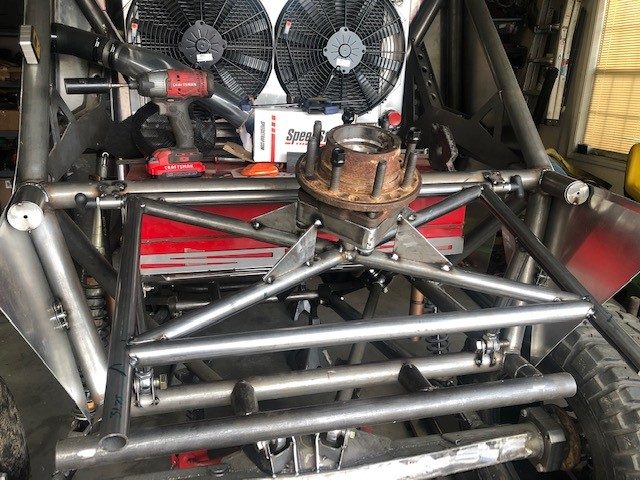
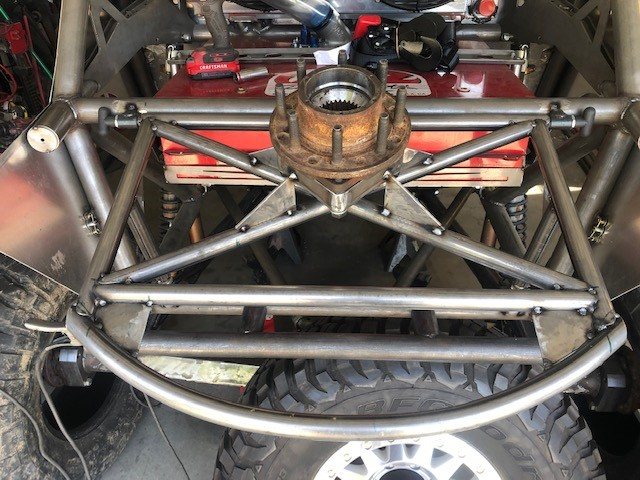
The last thing I needed to incorporate was something to keep it from rotating around. Although snug with lug nuts installed, I wanted to make sure it was as secure as possible. Brainstorming with my wife, she mentioned straps and later got me a Y-strap from Speedstrap to incorporate with the carrier which would complete this portion of the build. I used some 1/4" plate and cut out some tie downs for the Speedstrap. After adjusting the strap and installing the tie downs, the Y-strap completed the spare tire carrier build. Not only did it take care of the rotating, it presses the tire down onto the rear chassis crossbar, and it also adds additional space for PRP's tire storage.
The end result was perfect. It allows us to carry a spare unit bearing which results in studs/bolts and lug nuts, a spare tire, spare 3/4" LH and RH heims (our steering), folds down for easy tire removal, able to access storage underneath, and adds the additional PRP wheel storage with the Y-strap.

